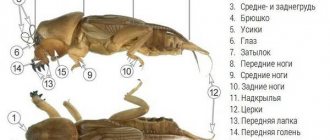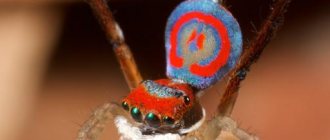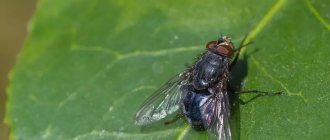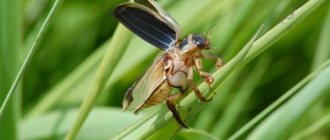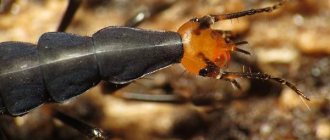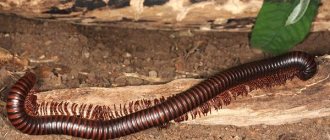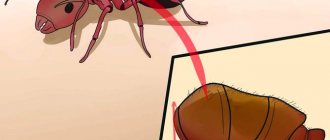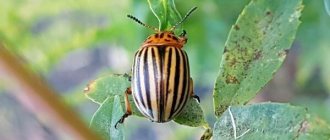It becomes a real nuisance for the owners of a house or apartment if a colony of ants begins to develop within the walls of their home. At first, one or more individuals may be noticed. But over time, the number of uninvited guests increases significantly. If you destroy insects that are found here and there on the owners’ road, this will not yield results.
The reason for the rapid spread of pests in the house is the queen ant. The successful spread of the species throughout the apartment depends on this individual. To get rid of a colony of ants in your home, you need to know what their queen looks like, as well as several features of its behavior.
Features of the ant queen
The queen ant (photo of the insect is presented below) occupies the highest place in the hierarchy of these insects.
The duties and relationships of the queen with the entire clan are somewhat different among different species. But among domestic (pharaoh) ants it enjoys special privileges.
The uterus does not protect its location; it does not take part in the processes of food storage. She also does not build a home or collect garbage. Its purpose is to ensure continuous replenishment of its colony.
All other representatives of this large family fully respect the interests of the queen. They create all the conditions so that she can freely replenish the colony with new individuals. This principle of behavior has become fundamental to the survival of this species and explains its distribution throughout the planet.
Appearance
What the queen ant looks like (photo below) should be examined in detail.
It's very easy to recognize her. It is significantly larger in size than other ants that are part of this colony.
The uterus has a large round abdomen. It has a darker color. Thin light stripes are visible on the abdomen. The abdomen is about 3-4 mm long. It is designed for laying eggs.
The queen's large dimensions make her clumsy. She is less mobile than other ants. This individual also has a fairly developed thoracic region. It is wider than that of worker ants. This is explained by the presence of small wings that the young female possesses before the establishment of her own colony. The queen sheds her wings when a new clan is founded.
What does the queen of the red army look like?
The most important difference between a female and what an ordinary ant looks like are the following features:
Large massive body and almost black, large abdomen, 3-4 mm in size. Its main purpose is to lay eggs. Moreover, the number of the latter depends on the species to which the insect belongs. Due to this body design, the queen looks quite large and appears clumsy, unlike the rest of the colony.
A characteristic difference between a queen ant and a worker ant is its enlarged breasts.
Also, the difference between working individuals and the female is that she has a wider and more developed chest, which is a consequence of the presence of wings at a young age. The fertilized ant queen drops them or chews them off. Therefore, she cannot fly, but only crawl.
In the anthill, young females, ready for fertilization, are winged and poorly distinguishable from males.
Features of reproduction
When studying the question of what a queen ant looks like, it is necessary to consider the characteristics of their reproduction. In almost all species, a large number of different-sex individuals emerge from pupae once a year. These males and females are capable of reproduction.
Mating occurs during flight. If the female has been fertilized, she no longer returns to her anthill. Such individuals scatter around in search of a suitable place to lay their first eggs. Then, working individuals emerge from them.
It is after flight that the queen gnaws off her wings, which allows her to obtain additional nutrients to continue her race. This is how colonies of many species of ants are born.
Winged
If you see an ant with wings, then this is a representative of one of two special and small ant classes.
The minority in ant society is the caste of male ants. Their life is short, and their fate is unenviable - after mating with a female, the “macho ants” die.
The second caste is oviparous females (“queens”). There are not many of them either. Depending on the species, each anthill is home to from one to several hundred “queens.” “Rulers” live a long time - with a successful combination of circumstances, each can reign for up to 20 years.
Question answer
Insect pests in the house: main types and methods of control. Infographics (09.20.2013)
Females and males are winged. During the only mating flight in her life, the queen may meet several partners. As a result of this peculiar orgy, she becomes a “machine” for the reproduction of ants for the rest of her life and will lay tens of thousands of fertilized eggs in the future. After mating, the female sheds her wings and is either accepted into an existing anthill, or she starts a new family.
Colony of house ants
The queen ant has a more privileged position in the colony of domestic representatives of the species. However, with the appearance of a large number of them, the attitude of worker ants towards them becomes somewhat dismissive. The uterus lives up to 15 years. During her life, she is capable of laying more than 500 thousand eggs.
Her environment is somewhat different from other clans. The largest colony that was recorded by scientists consisted of 340 thousand worker ants. But in ordinary nests there are up to 15 thousand individuals.
It should be noted that in almost all colonies the worker ants are female.
But among domestic species, males are also found in small numbers. But the rest of the community treats them poorly.
In a colony of pharaoh ants, which can be found within the walls of a house, only 10-15% of working individuals are engaged in searching for and obtaining food. All other members of the large family are in their den and are engaged in servicing the queen. Some individuals are engaged in caring for offspring. So the visible part of this anthill is insignificant compared to its real size.
Where can I find the queen of house ants?
To remove a colony of domestic gray ants from your home, it is important to first find it in your own home and then destroy the queen itself. The main thing is to find where the ant nest itself is located - ventilation shafts and cavities, channels, and so on.
In addition, the queen ant can also be found in hidden places in closets and bathrooms, kitchens and in multi-story buildings - in the cavity between the floors. If you can find the queen and destroy her, the ants will leave an area that is dangerous for subsequent reproduction.
How to get rid of the uterus?
The first priority is to find the ant nest itself. After this, it is worth treating it with industrial insecticidal, industrial preparations - aerosols.
The most effective aerosols for fighting ants:
- Raptor and Combat.
- Raid and Get.
If you have good access to an anthill, you can simply fill it with turpentine or boiling water, acetone, or gasoline. But it is dangerous to use such products in the house due to their high degree of flammability.
In addition, today on store shelves there are many other drugs available to fight ants - gels and baits, poisons and repellents.
Among the most effective and efficient are:
- Anteater and Brownie.
- Globol and Raptor.
- Sturm and Dokhlos.
For the purpose of prevention, these preparations can be used to treat areas where ants may potentially enter the house.
Note! It is definitely worth taking other preventive measures - regularly carrying out general cleaning, promptly inspecting areas of potential accumulation of food products as a source of nutrition and bait for insects.
Can house ants reproduce without a queen?
Without a queen at the head of the clan, insects will not be able to reproduce, because it is she who gives them life, laying new clutches of eggs, performing the main task of reproducing the clan and increasing the number of the anthill. But even if the queen dies or is destroyed, a replacement will always be found for her.
There are always young and healthy females in the anthill - the anthill does not remain for long without its queen. Therefore, if you want to rid your own home of ants, you should find and destroy, first of all, its dominant queen.
Most likely, insects will leave such a dangerous place for themselves and their kind, reproduction and life, however, they can migrate from one place to another corner of your house.
Unlike forest ants, which bring great benefits to humans and nature, their domestic counterparts do more harm. Not one family is immune from their appearance in the house - they penetrate through doors and windows, ventilation, sewers and any cracks.
Let's celebrate! Therefore, you can drive them out of the house if you find and destroy the queen herself. Moreover, today there are many industrial means and folk methods of combating them.
Difficulty identifying the uterus
The question of how to find the queen ant in domestic representatives of the species is quite complicated. The fact is that the reproduction process of these insects is different from others. The female becomes capable of giving birth when she reaches a certain size. After mating occurs, the queen does not leave her colony. She stays right here.
Because of this feature, in a colony of house ants there may be several hundred fertile queens. They coexist peacefully within the same colony, without showing aggression towards each other.
When the ants become crowded in their nest, they simply find a place near the main colony. They keep in touch with her. Queens can move from one nest to another. This is already a super anthill. It is very difficult to destroy it. To do this, you need to find all the nests and their queens.
Ant queens - species guide
Ant lovers (also known as myrmekeepers, antikeepers) are, as a rule, not professional myrmecologists. But any myrmekeeper will always need a wonderful ability - the ability to identify types of ants. If this is done correctly, then many of the difficulties of our hobby will recede: selecting food and living conditions, choosing an ant farm. Moreover, identifying all the workers encountered is not as important as identifying the ant queen .
The ant queen (female ant, ant queen) is the most important individual in the family, without which anthills of most species simply cannot exist. She lays eggs - creates the basis of a future society. But until this moment, the queen must take flight, where she will meet the male. Having mated and shed their wings, the females seek refuge in which to start a family. It is at this point that they can fall into the hands of ant lovers.
The first step is to set up an incubator for the captured ant queen. A glass test tube is best suited for this. We fill it to the brim with water, insert the cotton wool to the required depth (so that about 1/3 of the water remains at the bottom), pour out the excess water, blot it with a napkin, plant the queen and close the entrance with dry cotton wool. The incubator is ready! How can we now determine the type of uterus? If you don’t want to bother with this yourself, take a photo and send it to more experienced comrades. But believe me: identifying the species yourself is not very difficult. What does the queen ant you caught look like? Compare it with the illustrations! She probably looks exactly like a representative of one of the species presented here. If everything doesn’t work out right away, pay attention to the coloring and some structural details that you might not have noticed right away, and read our short guide.
- Messor structor (steppe harvester ant).
Messors are perhaps the most famous and “domestic” ants. what the queen of domestic ants looks like by looking into the formicarium. Don't you have reapers? This means it’s time to get them when you fly in April-May. The reaper uterus is relatively large (12 mm), black, with a large head and a round abdomen, which is separated from the chest by a stalk of two segments - a characteristic feature of ants of the subfamily Myrmicinae. The large head and short powerful mandibles are a device for grinding seeds: until soldiers appear in the family, the queen will do this.
- Tetramorium caespitum (turf ant).
The uterus of tetramoriums is similar to the uterus of reapers, but the most important thing that distinguishes it is its size: it is only 7-8 mm in length. The legs of the queen are shorter, the abdomen is more elongated in length (if in reapers it is closer to round, then in tetramoriums it is oval). Small spines are visible at the posterior end of the chest. The color is black-brown or black-gray. You can meet her at the end of May and June.
- Solenopsis fugax (thief ant).
The structure of the uterus of thieves resembles the previous species, but even smaller (up to 7 mm), the abdomen is even more elongated. In addition, the bottom of the abdomen is colored yellow. The head is smaller than that of the tetramorium uterus, narrower. The solenopsis uterus is squat and clumsy; it moves rather slowly and tends to burrow into the ground faster. Flight in autumn.
- Myrmica rubra (red myrmica).
Myrmik queens are distinguished by their small abdomens because they do not have nutrient reserves for raising larvae: after digging a hole and laying eggs, they regularly leave the shelter and look for food. They are about 7 mm in size, reddish-black or brown. A characteristic feature of the myrmic uterus is noticeable spines on the back of the chest, where it connects to the abdomen. Flights from late August to October.
- Leptothorax acervorum (subcortical ant).
If the myrmick uterus is reduced and its legs are shortened, you will get something similar to the leptothorax uterus. It is small (about 5 mm) and squat, and its abdomen in relation to its body is larger than that of the previous species. Leptothorax queens do not need to forage as often; they can sit with the brood for a long time, but sometimes they still need to leave the nest to feed. These are wood ants, which you will not find on the ground, so it is difficult to confuse them with someone else: after flying, the queen immediately lands on branches, trunks or wooden structures. Flight in May-June.
- Lasius niger (black garden ant).
Garden ants are well known not only by gardeners, but also by myrmekeepers, because during the flight (late June - August) you can meet hundreds and thousands of their queens, without even leaving your own yard. The lasius uterus is dull black (grayish) or brownish, densely folded (especially the large abdomen, which stores food reserves sufficient to raise the first generation of workers). Its head is small relative to its abdomen and chest. The size is about 1 cm. The abdomen is whitish-gray below; in fattened queens, light stripes are visible on its surface between the joints.
- Lasius flavus (yellow garden ant).
The uteri of this species are very similar in appearance to the previous species, but differ in color: the color of the flavus uterus is dominated by light brown shades, and the bottom of its abdomen is yellow. It is slightly (literally 1-2 mm) smaller in size than Lasius niger. The abdomen is just as thick, because after summer (late June-August) the flavus queen burrows underground and independently hatches the first ants.
- Lasius umbratus (yellow scent ant).
The coloring of the Umbratus uterus resembles the Flavus uterus, but their appearance is completely different. The female of this species has a small abdomen and head, enlarged and flattened in comparison with our other lasius. Size 7-8 mm. She is quite nimble, often running around with a caught and killed Lasius niger worker in her mandibles. In this way, the queen takes over the smell, camouflages herself, and then infiltrates the family of another species, takes the place of the main female and replaces the black ants with yellow ones.
- Serviformica rufibarbis (red-cheeked miner ant).
The structure of ants of the subgenus Serviformica is slightly reminiscent of lasius, but they are larger (11 mm) and brighter. Serviformians differ from their fellow genus Formica by having a small head and a voluminous abdomen full of fat reserves (so they can raise workers themselves). And the rufibarbis differs from its serviform relatives in its characteristic black pattern on the back. They can often be found in meadows, fields and cities, while Formicas live mainly in the forest. Servifiormic queens fly from early July to August.
- Formica rufa (red wood ant).
Formica is larger (14 mm) than Serviformica, but due to the reduced abdomen this is not very noticeable. Formica queens invade Serviformica families or take offspring from their colony, so they do not need fat reserves in the abdomen. Females looking for a nest can be found both in spring and summer. They are very fast and agile; catching Formica is not so easy.
- Raptiformica sanguinea (blood-red slave ant).
Raptiformica is the smallest (9-10 mm) from our list of the genus Formica, but with the largest head. This is a real warrior, because she has to fight her way into the family of the slave species. A small round abdomen, the size of a millet grain, distinguishes raptiformica from all other formicas. Another characteristic feature of the structure of this species is the notch on the shield between the mandibles (clypeus). It allows you to reliably fix the “ant egg ” (cocoon) during a raid for slaves. Slave owners fly in the middle of summer.
- Polyergus rufescens (Amazon ant).
The polyergus uterus is only 1 cm in size, but this is compensated by the powerful muscles of the jaws, which are shaped like sharp curved daggers. If you meet a fast and agile queen of red or red-brown color, there is a 99% chance that it is an Amazon female. The Amazons infiltrate the anthills of the serviformics and use them as slaves, because they themselves do not know how to do anything. Flights from July to mid-August.
- Camponotus vagus (black carpenter ant).
Vagus are the largest ants of all presented in this article. The length of the uterus reaches 1.5 cm! They themselves are massive, with a large head - the powerful muscles of the mandibles allow the female to single-handedly gnaw a hole in dry wood, where she will independently raise offspring. Light transverse stripes and silvery hairs are noticeable on the abdomen (it is the color of the hairs that distinguishes the uterus of the vagus from the closely related species C. saxatilis, in which they are golden). Flights from May to June.
So, we introduced you to the most common species and genera of ants and showed how their queens differ. Naturally, here are not all the species that you may come across, but by learning to accurately identify them, you will be able to recognize the rest.
Division into classes
Even knowing what a queen ant looks like and how to get it, you may not be able to cope with the destruction of an ant colony in your home on your own. Therefore, it is better to entrust such work to professionals.
In other types, the division into classes is quite simple. When the queen lays eggs, she marks them with special pheromones. These substances inhibit the sexual development of the offspring. This is how working individuals appear.
When the colony becomes very large, the queen will not have time to mark all the eggs. This is how individuals ready for fertilization begin to appear. This is a natural process of population regulation in other colonies.
In domestic ants, the queen can be compared to a milk cow on a farm. Worker ants take care of her, but if she stops laying enough eggs, the queen can be killed. This is how natural selection occurs.
How to find a nest?
The question of how to catch a queen ant is complicated by the presence of a large number of fertile individuals. Therefore, if you want to get rid of a colony, you need to look for all the nests.
Ants form their colonies in damp and warm places. Their favorite rooms in this regard are the kitchen and bathroom. It is also most likely a dark corner, inaccessible to others. Most often they are found in channels for electrical wires, in voids under tiles, sockets, etc.
Sometimes the anthill is not in the apartment, but in the nearby area. For example, these could be interfloor ceilings. Searches can take a lot of effort and time. But you still have to pay attention to this issue. It is best to notice the direction in which the worker ants move away with pieces of food. If no action is taken, the colony may grow so large that its functioning will be considered a natural disaster.
How to find the queen ant in an apartment
One colony of ants can organize several nests around the house and have several main individuals. The only way to get rid of insects is to find and destroy all the queens. To estimate the scale of the disaster, you can multiply the number of detected individuals by ten. This is a method that allows you to approximately understand the number of ants living in the house.
How to find the queen ant in an apartment? Studying the following features of their lifestyle will help with this:
- To house the queen, worker ants choose warm and dark places. It is necessary to carefully inspect ventilation openings and hard-to-reach places in the kitchen, bathroom and toilet.
- Pay special attention to cupboards with cereals and areas near food products.
- Passive observation will help determine the location of the uterus. Look where the workers take the food they get.
- Ant nests can often be found on balconies, attics and basements of multi-storey buildings.
Carefully!
When fighting domestic cockroaches on your own, you should remember that killing worker ants will not bring the desired result. The queen quickly restores the size of the colony.
How to deal with ants in the house?
The queen ant is the central person in the nest. She is fed pieces of food brought from outside. Worker ants can also regurgitate food, giving it to their queen.
The ants that appear in the apartment will sooner or later begin to move towards their colony with the food they have obtained. It is important to carefully monitor where they are going. If they go through holes in the wall, these passages should be sealed with silicone sealant.
If you are lucky enough to find the entire nest and destroy the queens in it, the remaining ants leave the dangerous place for other feeding territories. If it was not possible to find a colony, you should provide food with poison for the worker ants, who will deliver it to their queens. This is how you can cope with the invasion.
Having found out what the queen ant looks like, as well as the peculiarities of its behavior, you can cope with uninvited guests in your apartment. Action must be taken quickly, otherwise the scale of the disaster will be enormous.
